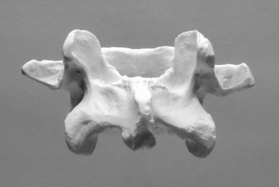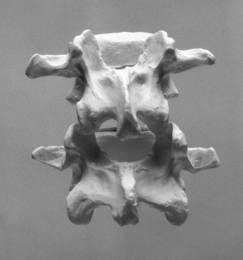10.3 Lumbar spine L1–5
Neutral positioning
Assume somatic dysfunction (S-T-A-R-T) is identified and you wish to use a rotation gliding thrust to produce cavitation at L3–4 on the right (Figs 10.17, 10.18).
1 Patient positioning
Lying on the left side with a pillow to support the head and neck.
Lower body. Straighten the patient’s lower leg and ensure that the leg and spine are in a straight line, in a neutral position. Flex the patient’s upper hip and knee slightly and place the upper leg just anterior to the lower leg. The lower leg and spine should form as near a straight line as possible, with no flexion at the lower hip or knee.
Upper body. Gently extend the patient’s upper shoulder and place the patient’s right forearm on the lower ribs. Using your left hand to palpate the L3–4 interspinous space, introduce right rotation of the patient’s upper body down to the L3–4 segment. This is achieved by gently holding the patient’s left elbow with your right hand and pulling it towards you, but also in a cephalad direction towards the head end of the couch (Fig. 10.19). Be careful not to introduce any flexion to the spine during this movement. Right rotation is continued until your palpating hand at the L3–4 segment begins to sense motion. Take up the axillary hold. This arm controls the upper body rotation.
Stay updated, free articles. Join our Telegram channel

Full access? Get Clinical Tree














